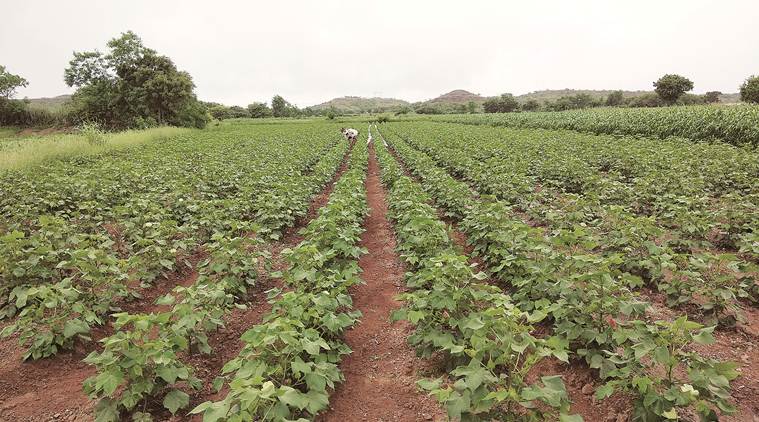 Senior agriculture officials said the infestation has crossed the economic threshold limit in only 20 villages in September, against initial estimates in August of 700 villages. (File photo)
Senior agriculture officials said the infestation has crossed the economic threshold limit in only 20 villages in September, against initial estimates in August of 700 villages. (File photo)
Only 20 villages in Maharashtra have been severely affected by the outbreak of pink bollworm (PBW) in cotton crop. The pink bollworm is an insect known for being a pest in cotton farming.
Senior agriculture officials said the infestation has crossed the economic threshold limit in only 20 villages in September, against initial estimates in August of 700 villages.
An economic threshold limit is a parameter used to assess the outbreak of the pest. It is the insect’s population level or extent of crop damage at which the value of the crop destroyed exceeds the cost of controlling the pest. The crossing of the threshold means that a sizable amount of the crop may be lost to the pest.
Cotton is generally sown in 21,000 villages in Maharashtra. This year, 39.7 lakh hectares of area have been brought under the cotton cultivation, compared to 41.1 lakh last year.
“This limit was crossed in 700 villages, which are mainly from Marathwada, Vidarbha and north Maharashtra regions. The department had set up district-level committees comprising local officials to check the infestation,” said an official. The infestation has now come down to 20 villages.
This year, pest attacks has been reported from Akola, Washim, Nanded, Parbhani and Jalgaon. Last year, PBW had created havoc on the cotton crop, after which the state government had announced compensation for affected farmers.
The PBW insect chews through the cotton lint to feed on seeds, with the infestation starting at the bud development stage. Flowering is affected and yield is hit. This year, the commissinoerate has claimed that just 5 per cent of the crop has been affected.
Pheromone traps are used to trap male insects to understand the nature of infestation. If 8-10 male insects are trapped per day, then usage of pesticide is recommended.
This year, cotton cultivation has been done on at least 37 lakh hectares of land in the state, as compared to 41 lakh hectares last year, senior officials said.
The plants are sown from April to July in the state. Farmers who generally opt for pre-seasonal (during April-May) plantation have shifted to other crops, which has brought down the overall cotton plantation figures in the state by 3-4 lakh hectares.